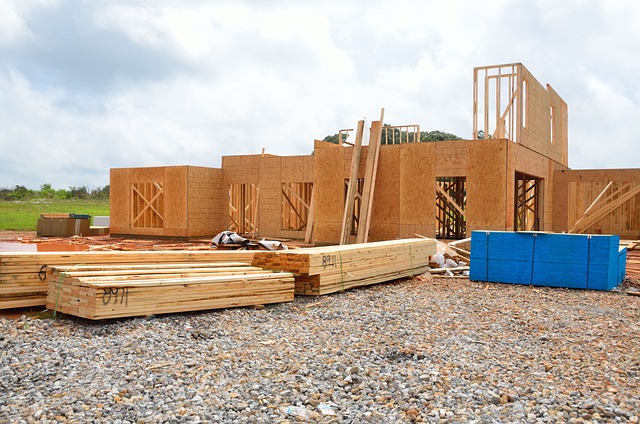In a landscape where economic disparities are stark, Opportunity Zones (OZs) emerge as a beacon of hope, promising revitalization for underserved communities and a boost for small businesses and entrepreneurs. This article delves into the world of OZs, exploring the potential benefits and critical viewpoints with an aim to shed light on this complex initiative. While keeping an optimistic tone, we critically analyze the impacts and future prospects, making the financial nuances accessible and engaging for all readers. Join us as we uncover the potential and pitfalls of these zones of opportunity.
Introduction to Opportunity Zones

Opportunity Zones (OZs) mark a transformative strategy for the revitalization of both urban and rural areas using tax incentives. Enacted as part of the 2017 Tax Cuts and Jobs Act, these zones aim to invigorate economic growth and job creation in communities facing distress. This section delves into the core aspects of OZs, shedding light on their inception, functionality, and the anticipated effects they have on targeted areas.
Creation and Designation of Opportunity Zones
How Opportunity Zones Came Into Being
OZs emerged from the Tax Cuts and Jobs Act on December 22, 2017, as an innovative addition to the tax code. This initiative seeks to foster investments in neighborhoods characterized by low income and high poverty.
The Process of Designating Opportunity Zones
Communities become eligible for OZ status through nomination by a state, the District of Columbia, or a U.S. territory, with the U.S. Treasury Secretary’s approval via the IRS. This initiative kicked off on April 9, 2018, when parts of 18 states received OZ designation. Since then, the program has expanded to include all 50 states, the District of Columbia, and five U.S. territories, marking a significant stride in nationwide urban and rural revitalization efforts.
Operational Mechanism of Opportunity Zones
Functionality of OZs
At their core, OZs leverage tax incentives to motivate investments in low-income and undercapitalized areas. Both corporations and individuals with capital gains are eligible to participate. The primary incentives offered include:
- Temporary Deferral: Investors can defer taxes on prior capital gains by redirecting these gains into Opportunity Funds until the end of 2026 or the disposal of the asset.
- Basis Step-Up: Investments held for over five or seven years benefit from a 10% and 15% basis increase, respectively.
- Permanent Exclusion: After a 10-year holding period, new capital gains from investments in Opportunity Funds are exempt from taxes.
Eligible Projects for Opportunity Funds
These funds are versatile, supporting a wide array of endeavors, from real estate and infrastructure to housing and startups. However, to qualify for Opportunity Fund financing, real estate projects must significantly upgrade the properties involved.
Goals and Impact of Opportunity Zones
The Objective of Economic Development
The ultimate aim of OZs is to drive economic growth and job creation in areas in dire need. By offering enticing tax benefits, these zones are intended to draw fresh capital, setting the stage for long-lasting economic renewal.
Opportunity Zones stand as an innovative and promising tool in the quest to mitigate economic disparities in struggling communities. By understanding their structure, operation, and the potential impacts, stakeholders can better leverage these zones for widespread societal benefit. This novel approach highlights the power of tax incentives and private investment in addressing critical economic challenges in distressed areas, paving the way for a more equitable and prosperous future.
The Bright Side for Small Businesses and Entrepreneurs
Opportunity Zones (OZs) have been heralded as a transformative mechanism for economic development, especially for small businesses and entrepreneurs. These zones are designed to revitalize economically-distressed communities through long-term investments. This section explores the optimistic side of this initiative, showcasing how it could potentially catalyze growth opportunities for businesses nestled within these zones.
Economic Boost from Opportunity Zones
The Economic Development Administration (EDA) is at the forefront of enhancing the American economy through its strategic investments in Opportunity Zones. By offering competitive grants, the EDA fosters job creation and attracts private investment, supporting development in economically distressed areas across the United States. The EDA views investment in Opportunity Zones as a crucial tool to enhance ROI for businesses and encourage vital public/private partnerships for channeling private investment into distressed areas.
In Fiscal Year 2018, EDA issued a Notice of Funding Opportunity that allowed Opportunity Zones to be eligible for funding even if the area did not meet EDA’s economic distress criteria. By June 2019, EDA included Opportunity Zones as one of its five Investment Priorities, significantly increasing the number of catalytic Opportunity Zone-related projects they could fund. As part of the White House Opportunity and Revitalization Council (WHORC), the EDA provides insights and overviews of its role in the initiative at Opportunity Zone roundtables, bringing together stakeholders across the country.

Success Stories
The White House Council of Economic Advisors reported that Opportunity Zones are on track to create half a million jobs and lift a million people out of poverty. As of the end of 2019, these zones had attracted over $78 billion in investments, significantly impacting underserved communities. To further bolster this initiative, EDA has invested over $750 million in more than 500 Opportunity Zone projects nationwide. These investments not only provide direct financial support but also create environments conducive to private investment and public-private collaborations, essential for revitalizing economically distressed areas.
Impactful Investments
Since FY 2018, EDA has invested over $13 million in 22 projects within Opportunity Zones to aid communities and regions in developing their economic capacity. Notable examples include a $2.5 million grant to Dubuque, Iowa, for replacing flood infrastructure to protect local businesses and attract more investment in a designated Opportunity Zone. Similarly, a $1.5 million grant to Durant, Oklahoma, for critical water infrastructure improvements is expected to create 73 jobs and spur $12 million in private investment in a designated Opportunity Zone.
Opportunity Zones present a beacon of hope for small businesses and entrepreneurs in economically-distressed communities. With substantial investments and the potential for significant economic impact, these zones could catalyze the long-term growth and revitalization needed. As we continue to observe the development of these zones, the stories of success and the challenges they face will be crucial in understanding and shaping the future of economic development in America’s underserved areas.
A Closer Look at Underserved Communities
Opportunity Zones (OZs) were not only created to boost small businesses and entrepreneurs but also to rejuvenate the very fabric of underserved communities. This section takes a closer look at the intention behind OZs, their actual impact on these communities, and whether the promise of revitalization has been met.
The Intentions Behind Opportunity Zones
At the heart of the OZ initiative is the desire to drive investment into low-income and undercapitalized communities. By offering tax incentives to investors, the program aims to redirect capital towards areas that have traditionally been overlooked, fostering economic growth, and job creation. The ultimate goal is to uplift these communities, providing a better quality of life for their residents.

Assessing the Impact on Communities
The impact of OZs on the targeted communities is a subject of significant interest and analysis. While the program has been a catalyst for investment in many areas, the extent to which it has effectively addressed the needs of the communities varies. Some zones have seen noticeable improvements in infrastructure, business growth, and job opportunities, while others are yet to witness substantial change.
Challenges and Criticisms
Despite the instances of success, the overarching effectiveness of the program in meeting its community and economic development goals has been questioned.
Some critics argue that without proper oversight, the program may benefit investors more than the actual residents of the Opportunity Zones. Concerns have been raised about gentrification, where increased investment leads to a rise in property values, potentially displacing the very residents the program aims to help.
Incentives and Investment Focus
The structure of the Opportunity Zone program primarily benefits projects with the highest returns rather than those with the highest needs. This skew in incentives means that while investors enjoy tax savings, the benefits don’t necessarily extend to the communities that the program was meant to help. This mismatch between intention and outcome has led to questions about the program’s design and its actual impact on economic and community development.
Access and Mismatch Issues
One of the significant criticisms of the program is the difficulty mission-oriented project sponsors face in attracting the interest of potential Opportunity Zone investors. Investors, who are often high net worth individuals or entities capable of capital gains deferral, might not align with the objectives of the communities. Moreover, a disconnect exists between investors, who find the 10-year investment period needed to gain the most tax savings too long, and communities, who believe this timeframe is too short for sustainable economic gains. The majority of OZ funds have been directed towards real estate developments rather than neighborhood businesses, which were initially intended to be the focus for job creation and community development. Additionally, some developers admitted they would have proceeded with their projects even without the OZ tax incentives, suggesting that the program might not be catalyzing new investments but rather redirecting where existing investments go.

Recommendations for Structural Changes
To address these structural barriers and make Opportunity Zones more effective, several changes have been suggested. These include:
- Increasing Support for Small Businesses:
- Redesigning the program to better support investments in small businesses through mechanisms like subordinated or hybrid debt or equity products. This would also involve more flexibility for mission-driven funds specializing in small business investing.
- Targeting Investments for Greater Impact:
- Shifting the focus of incentives towards investments that promise the greatest community impact rather than those that are most profitable. This could involve basing tax incentives on the number of quality jobs created or other measurable outcomes.
- Broadening Investor Eligibility:
- Allowing individuals without prior capital gains to invest in Opportunity Zones, possibly through mechanisms like refundable tax credits. Additionally, providing incentives for foundations and endowments to invest.
- Encouraging Investments in CDFIs:
- Permitting equity investments in community development financial institutions (CDFIs), known for their substantial investments in low-income communities, could steer more funds towards impactful projects.
While Opportunity Zones were launched with the promise of stimulating economic growth and job creation in America’s most underserved communities, their actual impact has been mixed. The criticisms and recommendations highlight the need for ongoing evaluation, transparency, and structural adjustments to ensure that the program meets its goals. Without significant changes, there’s a risk that Opportunity Zones may serve as a tax-saving mechanism for investors more than a transformative force for needy communities.
Future Prospects and Potential Reforms for Opportunity Zones
The future of Opportunity Zones is being shaped by proposed legislative changes aimed at refining the initiative’s effectiveness and transparency. A pivotal piece of this potential evolution is the Opportunity Zones Improvement, Transparency, and Extension Act (H.R. 5761). This bipartisan legislation introduces critical reforms designed to extend the program’s benefits, enhance accountability, and ensure that the investments are truly revitalizing the communities they aim to serve.
Extended Investment and Tax Deferral Period: The proposed bill seeks to extend the period for investment and tax deferral from December 31, 2026, to December 31, 2028. This extension would grant investors and communities additional time to capitalize on the program’s benefits. The extension acknowledges the need for a longer horizon to see substantial community impacts and addresses initial delays in program implementation.
Reinstating and Expanding Reporting Requirements: Transparency is a cornerstone of the proposed reforms. H.R. 5761 aims to reinstate and expand the reporting requirements initially envisioned for Opportunity Zones. These enhanced reporting requirements are designed to ensure that investments are tracked and evaluated for their long-term impact on communities, promoting accountability and providing valuable data for continuous improvement of the program.
Refocusing on High-Need Areas: The legislation addresses concerns about the inclusion of non-low-income communities in the program. By proposing an early sunset for zones with a Median Family Income at or above 130% of the national figure, the bill seeks to redirect the focus and benefits of the program toward areas that genuinely need investment and support.
Innovations in Fund Structure: Recognizing the need for more flexible investment structures, the proposed legislation would allow Qualified Opportunity Funds to invest in other Qualified Opportunity Funds, creating a ‘fund of funds’ system. This change is expected to facilitate more effective capital pooling and investment, particularly benefiting smaller projects and communities.
Enhancing Community Support: The bill introduces the State and Community Dynamism Fund, designed to provide operating support and technical assistance to high-poverty and underserved communities. This support aims to empower communities to better utilize Opportunity Zone investments and foster sustainable development. Additionally, the legislation proposes allowing certain adjacent brownfield tracts to qualify as Opportunity Zones, expanding the potential areas for revitalization.
Bipartisan Support and Legislative Journey: With bipartisan support, the proposed changes in H.R. 5761 are positioned to build upon the successes of Opportunity Zones while addressing key areas for improvement. As the bill progresses through the legislative process, it will be critical to monitor its development and the debates surrounding its provisions. The enhancements suggested in this legislation reflect a commitment to refining the Opportunity Zones initiative to better serve distressed communities, promote economic growth, and ensure transparent and accountable investments.
Opportunity Zones were introduced as a beacon of hope for economically distressed communities, offering a promise to bridge the gap between prospering and struggling areas across the United States. From optimistic beginnings to critical voices and calls for reform, we’ve seen how OZs have the potential to catalyze economic growth, drive investments, and uplift communities or to simply pad the pockets of the rich. As we look to the future of Opportunity Zones, it’s clear that while the path is fraught with challenges, there’s also a significant opportunity for meaningful change. By continuing to monitor, evaluate, and refine the initiative, stakeholders can ensure that OZs don’t just offer a tax break for investors but truly become a transformative force for economic revitalization and social upliftment in America’s most underserved communities.
The journey of Opportunity Zones is far from over. With eyes wide open to both the potential and the pitfalls, all involved parties must work together to ensure that this initiative lives up to its promise and becomes a genuine opportunity for all.
The future of Opportunity Zones looks to be one of thoughtful reform and enhancement. As reforms are debated and potentially implemented, the evolution of Opportunity Zones will be a critical area to watch for policymakers, investors, and community advocates alike.
References below:
- U.S. Economic Development Administration on Opportunity Zones: Link
- Tax Policy Center on Opportunity Zones: Link
- Internal Revenue Service – Opportunity Zones FAQs: Link
- Economic Innovation Group – Examining Opportunity Zones: Link
- Tax Foundation – Are Opportunity Zones Working as Intended?: Link
- BCT Partners – The Pros and Cons of Opportunity Zones: Link




GIPHY App Key not set. Please check settings